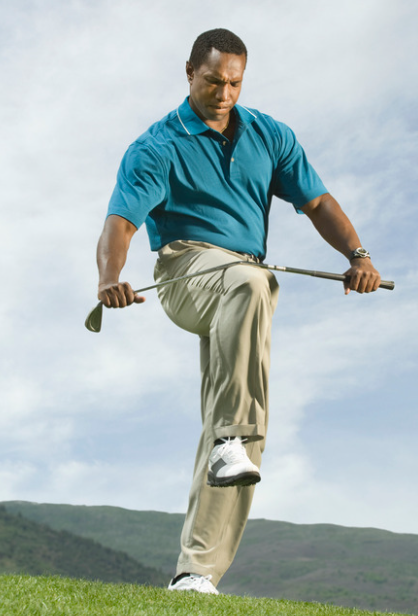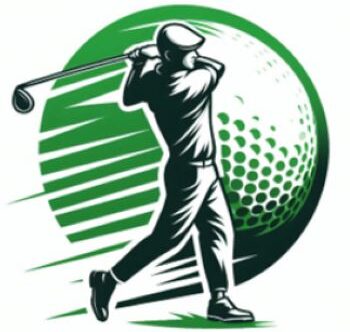I’ve struggled with a persistent slice in my golf game, and I know I’m not alone. One of the key elements I’ve learned in correcting a slice is the setup before you even swing. Learning how to stop slicing with the driver can make your round and improve your mindset. There is nothing worse than stepping on the 1st Tee slicing or hooking your drive, I have often found that making such a poor first drive normally dictates how the rest of your round will go, particularly in the amatuer game. Let me break it down.
How you stand over the ball, known as your alignment, is often overlooked but crucial for driving the ball straight. It’s easy to think you’re aimed correctly when you’re actually open to the target line, sending the ball curving to the right. I’ll detail how to perfect alignment by visualizing railway tracks with your body and club.
A weak grip can also contribute to an open club face at impact, which exacerbates a slice. I realized that by simply changing my grip from a neutral or weak position to a slightly stronger one, I could better control the face of my club. I’ll show you how to strengthen your grip without overdoing it, along with exercises designed to enforce this stronger grip during your swing.

Adapting the right foundation with a correct setup and a stronger grip sets the stage for effectively tackling the next element in our quest to straighten out the infamous slice – the ball’s position in your stance. It’s a smooth transition: once your body is aligned correctly, and your grip is firm, ensuring the ball is placed correctly becomes much easier.
The Ball Position Effect: Your Key to a Straighter Drive
I’ve seen time and again how ball placement can make or break a golfer’s drive. Let’s focus on why the ball’s position is such a defining factor. Does it sit too far forward, or maybe too back in your stance? Either can send your ball veering off into slice territory.
Here’s what I recommend: position the ball just inside the leading heel. This is generally the sweet spot for most drivers. When done right, it lets the clubface contact the ball squarely, sending it straight down the fairway.
To solidify this, take this drill to the range: place a club on the ground parallel to your target line, just in front of your feet. With each swing, ensure that the ball lines up with your leading heel consistently. This visual aid keeps your alignment and positioning in check.
However, I’ve observed golfers unwittingly sabotage their drives with incorrect ball positioning. For instance, placing the ball too far forward can cause an open clubface upon impact. Conversely, too far back can result in an early closure of the clubface. Awareness is the first step to correction.
Securing the correct ball position is a game-changer, but nailing this won’t solve everything if wrist extension at the top of your swing is out of sync. That’s what we’ll explore next so that you can truly master the art of the drive.
The Top of the Swing: Preventing Excessive Wrist Hinge
One culprit behind that frustrating slice may reside in what your wrists are up to at the top of your swing. Too much wrist extension, or hinge, can set the stage for the club face to open, leading to that dreaded slice.
I’ve found it helpful to first understand what excessive wrist hinge looks like. It’s when your wrists bend too far backward as you lift the club. This movement can throw off the club face’s angle at impact with the ball, sending it veering right for right-handed players.
To combat this issue, focus on keeping your wrists firmer at the top of your swing. Imagine holding a glass of water that you don’t want to spill. This visual helps maintain the necessary firmness without tensing up.
For golfers who learn best with aids, consider using a training tool designed to control wrist hinge. These gadgets give immediate feedback on your wrist position throughout the swing.
Exercises that build the correct muscle patterns are essential. Practice swings focusing on maintaining a less hinged wrist position can train your muscles to remember this position during your actual drive.
As you improve your wrist action, you’ll find that the next steps, which include creating a consistent practice routine and fostering the mental game, become significantly easier.
Bringing It All Together: Consistent Practice Leads to Improved Performance
As I wrap this up, remember that understanding and adjusting your alignment, grip, and ball position are all crucial to fixing that pesky slice with the driver. But knowledge alone won’t get you there. It’s the consistent, dedicated practice that really makes the difference.
Establishing a routine practice schedule is like building a bridge to your success. Every session should bring together the setup and swing adjustments you’ve learned. By doing this, you’re not just grooving a better swing; you’re also solidifying your mental game.
Confidence on the course comes from knowing you’ve done the work off it. The more you practice the right techniques, the more you can trust your swing when the pressure is on.
Keep track of your progress. It’s not just about the distance your drives cover; it’s the flight path they take. When you notice your shots start to straighten out, celebrate those victories, no matter how small. If things aren’t improving as quickly as you’d like, consider seeking advice from a certified golf instructor.
Patience is your ally here. Golf is a challenging sport, and changes won’t happen overnight. But with perseverance and a commitment to the fundamentals, I’m confident you’ll see that slice turn into a powerful, commanding drive.
So grab your clubs, hit the range, and focus on each swing at a time. I’m excited for you to see the results that come from this thoughtful, structured approach to improving your game.

The article provides practical tips and techniques for addressing one of the most common issues golfers face: slicing the ball. The advice ranges from grip adjustments to swing changes, all aimed at helping golfers achieve a straighter, more consistent drive. Given the detailed advice provided in the article, what are some additional strategies or drills that have helped you personally or others you know in successfully reducing or eliminating their slice with the driver?